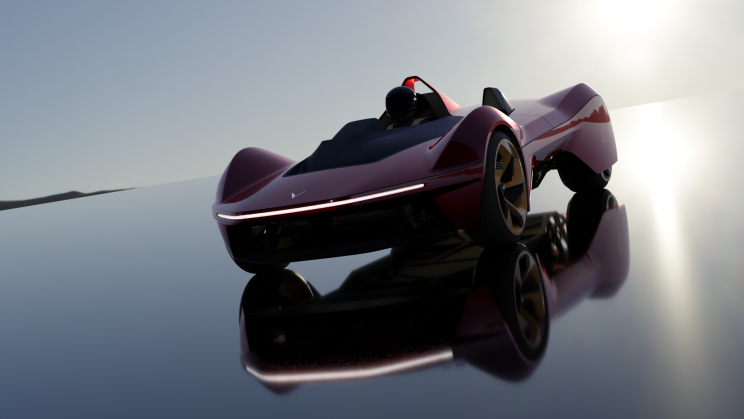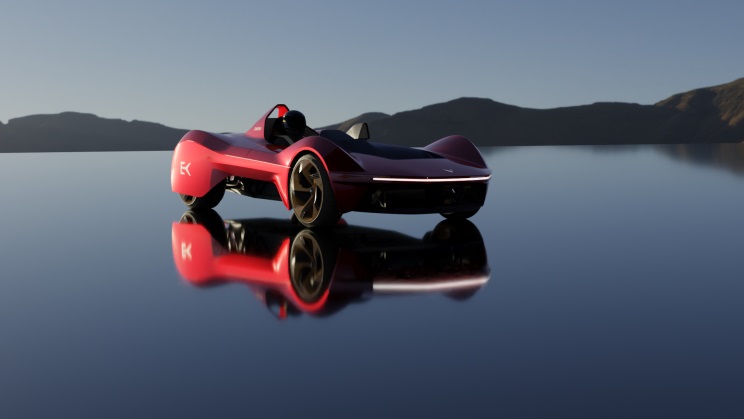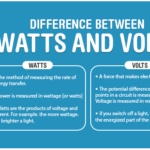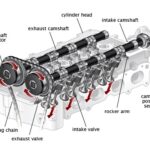
A Mumbai, India-based startup called Vazirani Automotive revealed images of its Ekonk electric hypercar, which was designed to be the “lightest EV ever. The car, which looks like it’s out of the ‘Speed Racer’ movie, was designed with a special cooling system to keep it as light and fast as possible.
Though the Ekonk is still in the prototype phase, the Vazirani Automotive team says it aims to develop the fastest car ever built in India, and the lightest electric vehicle in the world. The Vazirani Automotive team says the hypercar will weigh only 738 kilograms (1,627 lb) and reach a top speed of 192mph (308 km/h).

The Ekonk’s impressive air cooling system uses Vazirani’s so-called DiCo technology, which the automaker says was developed via biomimicry — it uses a similar method to some flying and gliding animals that fly through air to cool themselves down. This sets the Ekonk apart from most modern electric vehicles, which use liquid cooling systems to cool down their battery packs.
Ekonk ‘is the first car that breathes’
The Vazirani team used the DiCo system as well as a body made out of carbon fiber to keep the weight of the vehicle down. The creators claim the Ekonk has an electric powertrain that produces 722 horsepower allowing it to go from 0-62 mph (0-100 km/h) in only 2.54 seconds.

“For us, Ekonk signifies our real beginning, where for the first time design and innovation come together. It’s our first vehicle that’s ‘alive’. In the Indian scriptures, Ekonk signifies the beginning of the divine light. The big bang,” Chunky Vazirani, founder of Vazirani, who is a former employee of Rolls-Royce and Jaguar Land Rover, explains in a promotional video (above) released alongside the images of the Ekonk.
The founder also describes the biomimicry of the Ekonk’s air cooling system by saying “we deeply studied the way humans and animals regulate their body temperatures to create a technology that’s the first of its kind. […] The Ekonk is the first car that breathes.”

On its website, Vazirani says the Ekonk has been tested at the Natrax high-speed track near Indore, India, though the company hasn’t released any information on whether the car will eventually go into production. The company also revealed India’s first electric hypercar, called Shul, back in 2018, so technology developed for Ekonk may, at the very least, make it to some of Vazirani’s other production vehicles. Though the Ekonk might never go into production, you have to give it to Vazirani for actually building a car that looks as bold as other designers’ future vision design concepts.


